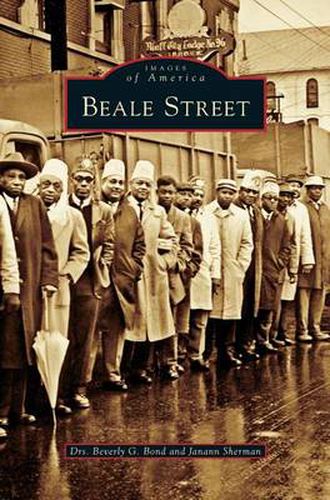Readings Newsletter
Become a Readings Member to make your shopping experience even easier.
Sign in or sign up for free!
You’re not far away from qualifying for FREE standard shipping within Australia
You’ve qualified for FREE standard shipping within Australia
The cart is loading…






This title is printed to order. This book may have been self-published. If so, we cannot guarantee the quality of the content. In the main most books will have gone through the editing process however some may not. We therefore suggest that you be aware of this before ordering this book. If in doubt check either the author or publisher’s details as we are unable to accept any returns unless they are faulty. Please contact us if you have any questions.
Once celebrated as the Main Street of Negro America, Beale Street has a long and vibrant history. In the early 20th century, the 15-block neighborhood supported a collection of hotels, pool halls, saloons, banks, barber shops, pharmacies, dry goods stores, theaters, gambling dens, jewelers, fraternal clubs, churches, entertainment agencies, beauty salons, pawn shops, blues halls, and juke joints. Above the street-level storefronts were offices of African American business and professional men: dentists, doctors, undertakers, photographers, teachers, realtors, and insurance brokers. By mid-century, following the social strife and urban renewal projects of the 1960s and 1970s, little remained of the original neighborhood. Those buildings spared by the bulldozers were boarded up and falling down. In the nick of time, in the 1980s, the city realized the area’s potential as a tourist attraction. New bars, restaurants, and entertainment venues opened along the remaining three-block strip, providing a mecca for those seeking to recapture the magic of Beale Street.
$9.00 standard shipping within Australia
FREE standard shipping within Australia for orders over $100.00
Express & International shipping calculated at checkout
This title is printed to order. This book may have been self-published. If so, we cannot guarantee the quality of the content. In the main most books will have gone through the editing process however some may not. We therefore suggest that you be aware of this before ordering this book. If in doubt check either the author or publisher’s details as we are unable to accept any returns unless they are faulty. Please contact us if you have any questions.
Once celebrated as the Main Street of Negro America, Beale Street has a long and vibrant history. In the early 20th century, the 15-block neighborhood supported a collection of hotels, pool halls, saloons, banks, barber shops, pharmacies, dry goods stores, theaters, gambling dens, jewelers, fraternal clubs, churches, entertainment agencies, beauty salons, pawn shops, blues halls, and juke joints. Above the street-level storefronts were offices of African American business and professional men: dentists, doctors, undertakers, photographers, teachers, realtors, and insurance brokers. By mid-century, following the social strife and urban renewal projects of the 1960s and 1970s, little remained of the original neighborhood. Those buildings spared by the bulldozers were boarded up and falling down. In the nick of time, in the 1980s, the city realized the area’s potential as a tourist attraction. New bars, restaurants, and entertainment venues opened along the remaining three-block strip, providing a mecca for those seeking to recapture the magic of Beale Street.